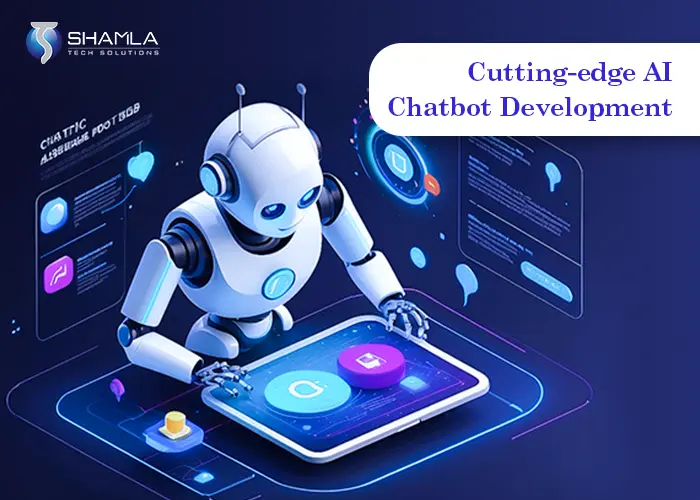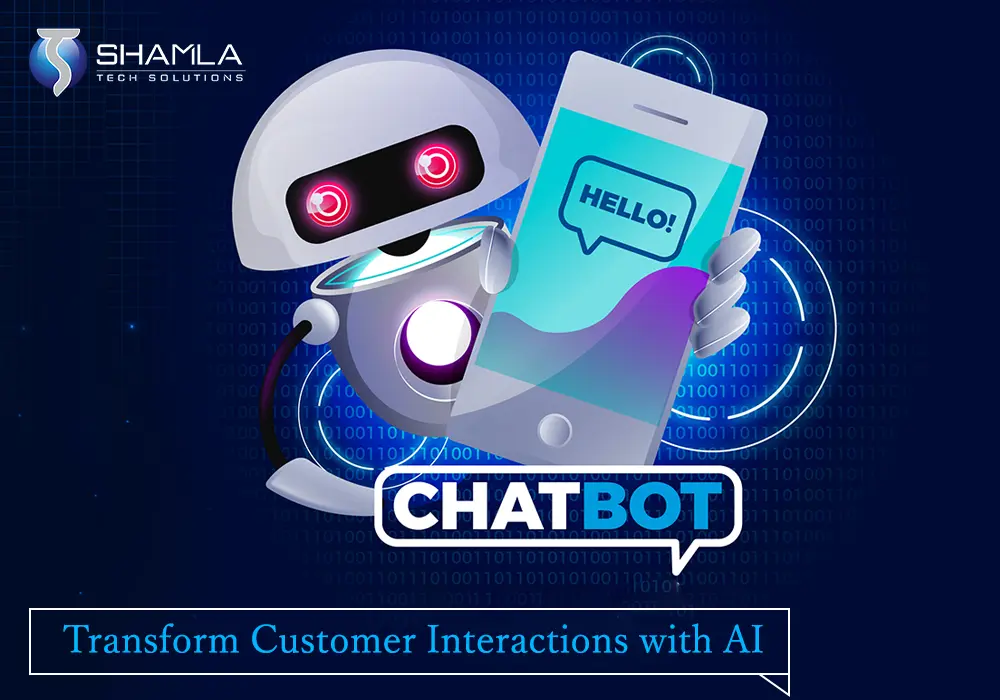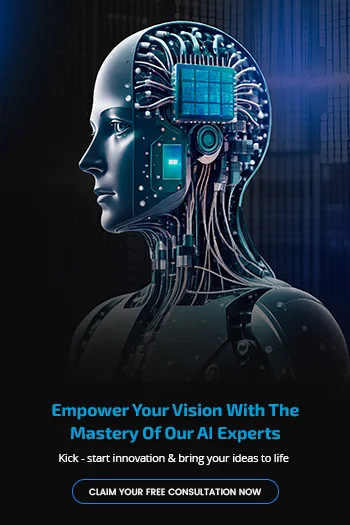In today’s digital landscape, AI chatbots have become an essential tool for businesses seeking to enhance customer interactions and streamline operations. These intelligent systems can engage users, answer queries, and perform tasks with remarkable efficiency. Developing an AI chatbot involves a series of well-defined steps, from initial planning to deployment and ongoing maintenance. This comprehensive guide will walk you through the entire process of AI chatbot development, highlighting crucial aspects such as requirement gathering, platform selection, conversation design, and integration of advanced AI technologies. Whether you are a chatbot developer or a business looking to leverage chatbot development services, understanding these steps will empower you to create effective and engaging AI chatbots.
Artificial intelligence chatbots are rapidly becoming essential components of modern companies’ digital strategies, significantly enhancing customer service and reducing operational costs. However, developing and integrating an AI chatbot into existing business processes can be complex and challenging. With extensive experience working with industry-leading companies, one solution offers an authoritative and seamless approach.
Having successfully delivered software projects in over 102 countries and partnered with more than 100 integration partners and resellers worldwide, this AI solution serves thousands of companies across the globe. As an official partner of UKG, Oracle, and Amazon AWS, and a recipient of the “2023 Technology Innovation Award” from UKG, it stands out for its expertise and innovation.
Fully compliant with HIPAA, GDPR, CCPA, FERPA, and FIPS, this AI solution ensures the highest standards of data security and privacy. With years of specialized experience in AI, it provides unparalleled accuracy, efficiency, and innovation, serving hundreds of satisfied customers daily. By leveraging this AI solution, businesses can efficiently harness the power of AI and LLM integration, ensuring a smooth transition and maximizing the benefits of advanced chatbot technology.
Step 1: Define Your Business Needs and Objectives
Identifying your company’s needs and goals is essential before beginning the AI chatbot development process. Determine how an AI chatbot may improve and automate your business in specific areas like sales, customer service, or internal processes. To guarantee a customized and efficient solution, identify the required features, target demographic, and intended results.
Step 2: Choose the Right AI Chatbot Development Platform
Choosing the right AI chatbot development platform is a crucial step that can greatly affect your project’s success. An all-inclusive and intuitive platform simplifies the creation and incorporation of artificial intelligence chatbots and LLMs into business processes.
Step 3: Configure the Chatbot’s Flow and Interactions
Setting up the chatbot’s interactions and flow becomes straightforward with the right platform. Create the conversational flow of the chatbot—including triggers, keywords, and automatic responses—using a user-friendly interface. Customize the language and tone to ensure consistent engagement with users.
Success Story: Enhancing Customer Engagement in the Retail Industry
One retail industry client faced significant challenges in managing customer inquiries and providing consistent support across multiple channels. By choosing the right AI chatbot development platform, they transformed their customer service operations. They configured the chatbot’s flow and interactions with ease, setting up conversational flows, triggers, keywords, and automatic responses tailored to their brand’s voice. Within six months, the chatbot handled over 70% of customer inquiries autonomously, reducing average response time by 40%. This led to a 25% increase in customer satisfaction scores and a 30% reduction in operational costs. Seamless integration with their existing CRM system ensured that all customer interactions were logged and accessible for further analysis and optimization. By leveraging AI, the retail company not only enhanced their customer service but also established a scalable and efficient support system that continues to deliver measurable results.
Step 4: Design the Chatbot’s Interface
A well-designed chatbot interface can greatly improve user engagement and satisfaction. Using a drag-and-drop editor, you can create easy and aesthetically pleasing interfaces consistent with your brand. Personalize the chatbot’s look and feel with colors, fonts, and multimedia components to create a unified and engaging experience.
Step 5: Integrate with Enterprise Systems
Integration is a breeze with the right platform. It makes it easy to integrate your AI chatbot with pre-existing business tools, including HCM, CRM, and ERP programs, as well as other third-party apps and websites. The chatbot can obtain and utilize important information, improving its functionality and efficacy, while REST API integration ensures smooth data flow.
Step 6: Train and Optimize the AI Chatbot
Cutting-edge AI and LLM technologies enable your chatbot to learn and improve on its own. The chatbot can learn from its interactions by feeding it relevant data and using machine learning algorithms and provide more accurate and tailored responses over time. Solution specialists can also personalize the responses according to your business needs.
Step 7: Test, Deploy, and Monitor
Extensive testing before release is critical to identify and fix any problems or improve the chatbot. Thorough testing resources ensure a problem-free rollout. After launching the chatbot, continuous monitoring of its performance, user feedback, and iterative improvements help optimise it further.
By building and integrating AI chatbots, businesses can save time, increase productivity, and provide better customer service. Cutting-edge AI and LLM technologies, seamless integration capabilities, and an intuitive interface help organizations stay ahead of the curve and realize the full potential of conversational AI.
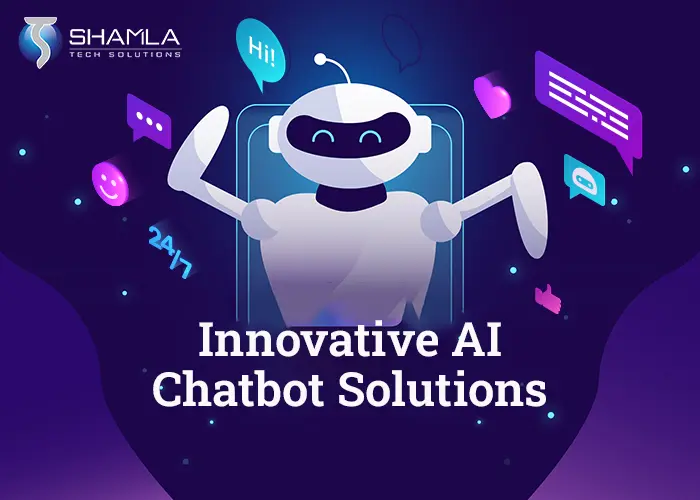
Understanding AI Chatbots Definition and Types of AI Chatbots
AI chatbots, often referred to as ai bots to talk to, are computer programs designed to simulate human conversation through text or voice interactions. They leverage artificial intelligence to understand and respond to user queries, making them essential tools in various applications such as customer service, personal assistance, and information dissemination.
There are primarily two types of AI chatbots: rule-based and AI-based. Rule-based chatbots operate on a predefined set of rules and scripts. They follow a fixed path of conversation and are limited to responding within the scope of their programming. For example, a rule-based ai chatbot example might be a simple FAQ bot that answers common questions based on a set of predefined responses.
In contrast, AI-based chatbots use machine learning algorithms to understand and generate responses. These chatbots are more flexible and can handle a wider range of queries. They continuously learn from interactions, improving their responses over time. AI chatbot examples include sophisticated virtual assistants like Siri, Alexa, and chatbots that utilize models such as GPT (Generative Pre-trained Transformer).
Differences Between Rule-Based and AI-Based Chatbots
Rule-based chatbots are simpler to develop and deploy but are limited in their functionality. They are ideal for straightforward tasks but struggle with complex or unexpected queries. On the other hand, AI-based chatbots offer a more dynamic interaction by understanding context and providing more accurate and varied responses.
The development of these advanced chatbots involves the expertise of a chatbot developer who utilizes chatbot development services to build and integrate these bots into various platforms. The integration often includes the use of an ai chatbot api, which allows the chatbot to access external data and functionalities, enhancing its capabilities.
For instance, an ai chat gpt online chatbot can engage in more natural and contextually relevant conversations, thanks to the underlying GPT model. This makes them highly effective for customer service, where understanding and responding to a wide range of queries is crucial.
In summary, while rule-based chatbots are suitable for simple, repetitive tasks, AI-based chatbots provide a more robust and flexible solution for interactive and complex tasks. Leveraging the right type of chatbot and utilizing chatbot development services can significantly enhance user experience and operational efficiency.
Planning and Requirement Gathering
Defining the Chatbot’s Objectives and User Scenarios
The first step in developing AI chatbots involves meticulously planning and gathering requirements. This stage is crucial as it lays the foundation for the entire chatbot development process. To start, it is essential to define the chatbot’s objectives clearly. What are the primary goals the chatbot needs to achieve? For instance, should it handle customer service inquiries, provide personalized recommendations, or assist with booking and reservations? Clearly defining these objectives ensures that the chatbot development aligns with the business needs and user expectations.
Additionally, identifying user scenarios is pivotal. Understanding the various situations in which users might interact with the chatbot helps in designing relevant and efficient conversation flows. For example, ai bots to talk to might need to handle scenarios such as answering frequently asked questions, assisting with product purchases, or providing troubleshooting support.
Conducting a Thorough Requirement Analysis
Once the objectives and user scenarios are defined, the next step is conducting a comprehensive requirement analysis. This involves gathering detailed information on what functionalities the chatbot needs to have. It includes identifying the specific intents and entities the chatbot should recognize and respond to, as well as determining any integrations needed with external systems.
A practical ai chatbot example might be a customer service bot that can pull order details from a CRM system to provide order status updates. Another ai chatbot example could be a virtual assistant that integrates with a calendar API to schedule and manage appointments.
Requirement analysis also involves understanding the technical and operational constraints. This is where the expertise of a chatbot developer comes into play. They leverage chatbot development services to outline the technical specifications, including the architecture, platform, and tools required. Utilizing an ai chatbot api ensures that the chatbot can connect seamlessly with various data sources and services, enhancing its functionality.
For instance, integrating an ai chat gpt online module could significantly improve the chatbot’s ability to understand and generate natural language, making interactions more fluid and user-friendly. This can be particularly beneficial for creating conversational experiences that feel more human-like and engaging.
Meticulous planning and thorough requirement gathering are critical steps in developing effective AI chatbots. By defining clear objectives, identifying user scenarios, and conducting a detailed requirement analysis, you set a strong foundation for building a robust and functional chatbot that meets user needs and business goals.
Selecting the Right Platform and Tools
Overview of Popular Chatbot Development Platforms
Choosing the right platform and tools for developing AI chatbots is critical to ensuring successful implementation. There are several popular platforms available that offer comprehensive features and capabilities for chatbot development.
Dialogflow, by Google, is a leading platform known for its robust natural language understanding (NLU) and integration capabilities with Google Assistant. It supports various languages and allows seamless integration with other services through webhooks and APIs.
Microsoft Bot Framework is another popular choice, offering extensive tools and services for building, testing, and deploying chatbots. It supports multiple channels like Skype, Facebook Messenger, and Slack, making it versatile for reaching users across different platforms.
IBM Watson Assistant provides advanced AI and machine learning capabilities to develop conversational agents. It excels in handling complex dialogues and integrates easily with various enterprise applications, making it suitable for businesses with sophisticated requirements.
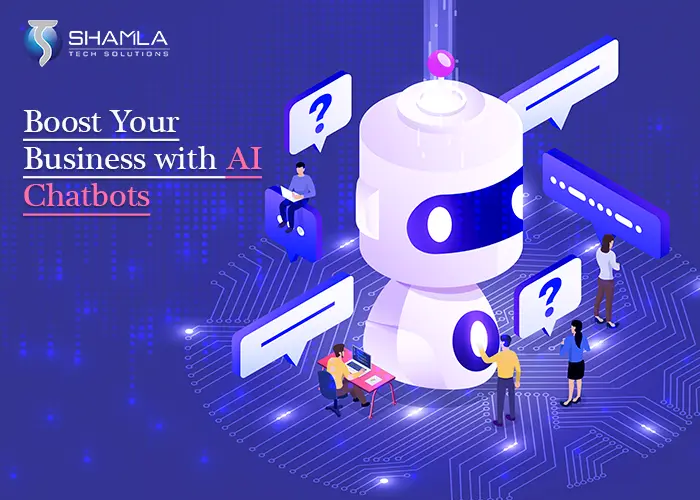
Tools and Technologies Needed for Development
To build effective AI chatbots, developers need to leverage a range of tools and technologies. These include:
Natural Language Processing (NLP) Tools: Tools like NLTK, spaCy, and BERT help process and understand human language, which is crucial for developing chatbots that can interpret and respond accurately to user inputs.
Machine Learning Libraries: Libraries such as TensorFlow and PyTorch are essential for training and deploying machine learning models that enhance the chatbot’s intelligence and learning capabilities.
AI Chatbot API: Utilizing an ai chatbot api allows developers to integrate advanced functionalities such as sentiment analysis, entity recognition, and language translation into the chatbot, making interactions more dynamic and context-aware.
Development Platforms: As mentioned, platforms like Dialogflow, Microsoft Bot Framework, and IBM Watson Assistant provide comprehensive environments for building, deploying, and managing chatbots. These platforms often come with built-in NLP capabilities and easy integration options with various third-party services.
Cloud Services: Cloud platforms like AWS, Google Cloud, and Azure offer scalable infrastructure and services such as AI chat gpt online modules, which can be integrated into the chatbot to enhance its conversational abilities.
For instance, an ai chatbot example could be a customer service bot developed using Dialogflow, integrated with a CRM system via an ai chatbot api to fetch user data and provide personalized responses. Another ai chatbot example might involve using Microsoft Bot Framework to create a virtual assistant that integrates with Outlook and Teams to manage schedules and communications.
In conclusion, selecting the right platform and tools involves evaluating the specific needs of the chatbot project and leveraging technologies that provide the best fit for those requirements. Whether you are a seasoned chatbot developer or utilizing chatbot development services, the right combination of platforms and tools will significantly enhance the chatbot’s functionality and user experience.
Designing the Conversation Flow
Crafting User Stories and Dialogues
Designing the conversation flow is a critical step in AI chatbot development. This process begins with crafting user stories and dialogues that outline how users will interact with the chatbot. User stories are narratives that describe the various ways users might engage with the chatbot to achieve specific goals. These stories help the chatbot developer understand the user’s needs and create a more intuitive and helpful bot.
For example, a user story for a customer service ai bot to talk to might involve a scenario where a user needs help with their order status. The dialogue would map out the steps the chatbot takes to ask for the order number, check the status, and provide the information back to the user. By detailing these interactions, developers can ensure that the chatbot covers all necessary conversational paths and responds appropriately in different situations.
Creating a Conversational Framework
Once user stories are crafted, the next step is to create a conversational framework. This involves setting up a structured flow of dialogues, including greetings, main interactions, and closing statements. The framework should account for various user inputs and provide coherent, contextually appropriate responses.
Using tools like ChatGPT and other advanced AI models, developers can enhance the chatbot’s conversational abilities. For instance, ai chatbot examples can show how a bot handles multiple intents in a single conversation, such as answering a product query and processing a return request in one seamless interaction.
An ai chatbot example would include mapping out dialogues like:
User: “Where is my order?”
Bot: “Please provide your order number.”
User: “It’s 12345.”
Bot: “Your order is currently being processed and will be shipped within the next 24 hours.”
To build this conversational framework, chatbot development services often employ tools that integrate AI chatbot API functionalities. These APIs enable the bot to access external databases, perform computations, and provide dynamic responses based on real-time data.
Using ai chat GPT online platforms allows developers to test and refine the conversational flow continuously. By simulating various user interactions, developers can identify potential issues and optimize the bot’s responses for a smoother user experience.
Incorporating AI bots to talk to within the framework ensures that the bot can handle unexpected queries gracefully. For example, if a user asks a question outside the pre-defined scenarios, the bot can leverage AI to provide an intelligent fallback response, such as, “I’m not sure about that, but I can connect you with a human agent.”
Designing the conversation flow involves meticulously crafting user stories and dialogues to cover all possible interactions and creating a robust framework that utilizes AI technologies. By focusing on these aspects, developers can create a chatbot that is not only functional but also engaging and user-friendly.
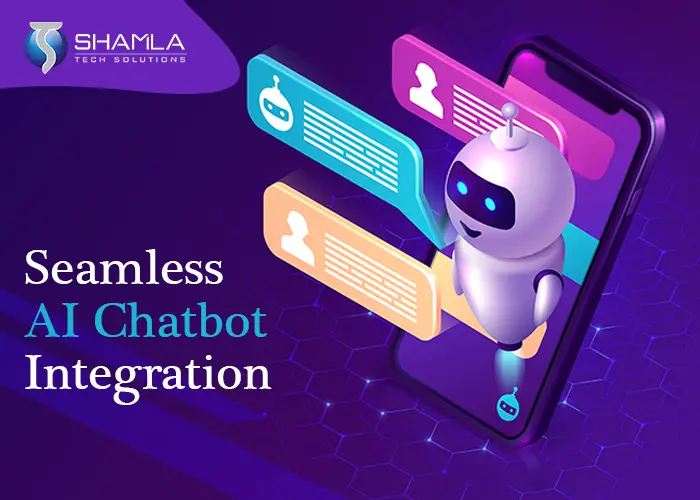
Developing the Chatbot
Choosing a Development Approach
There are two main approaches to developing an AI chatbot: custom development and using chatbot builders. Custom development involves hiring a chatbot developer or a team of developers to create a chatbot from scratch. This method offers complete flexibility and allows for the creation of highly customized bots tailored to specific business needs. Custom development is ideal for complex bots requiring unique features and deep integrations with existing systems.
On the other hand, chatbot builders are platforms that provide tools and frameworks to create chatbots with minimal coding. These builders are suitable for businesses looking for a quick and cost-effective way to deploy chatbots. Examples include platforms like Dialogflow, Microsoft Bot Framework, and Chatfuel. Chatbot builders are equipped with pre-built templates and drag-and-drop interfaces, making them accessible for non-developers.
Integrating Natural Language Processing (NLP) Capabilities
For both custom development and chatbot builders, integrating Natural Language Processing (NLP) is crucial. NLP enables chatbots to understand and interpret human language, allowing them to provide relevant responses.
An ai chatbot example of effective NLP integration can be seen in ai bots to talk to users naturally, handling various intents and entities. For instance, an AI chatbot used in customer service can understand and process customer queries about product availability, order status, and returns seamlessly.
Using ai chatbot API services from providers like Google Dialogflow, IBM Watson, and Microsoft LUIS can enhance the bot’s NLP capabilities. These APIs offer powerful NLP features that help parse and understand user inputs. They also support multiple languages and can be trained to improve accuracy over time.
During development, it’s essential to test the chatbot extensively. Platforms like ai chat gpt online offer environments where developers can simulate real-world interactions to ensure the bot performs as expected. This testing phase is crucial for refining the bot’s responses and ensuring it handles diverse user queries effectively.
For chatbot development services, integrating NLP is not just about understanding text; it also involves context management and maintaining coherent conversations. Advanced NLP models can track the context of a conversation across multiple turns, providing a more engaging and human-like interaction.
Whether you opt for custom development or chatbot builders, integrating NLP capabilities is essential for creating effective and user-friendly chatbots. By leveraging ai bots to talk to, using ai chatbot examples for inspiration, and utilizing robust ai chatbot api, businesses can develop chatbots that significantly enhance user experience and operational efficiency.
Integrating AI and Machine Learning
Training the Chatbot with Data Sets
One of the essential steps in ai chatbot development services is training the chatbot with relevant data sets. Training involves feeding the bot with a diverse set of user queries and responses, enabling it to understand and process different types of interactions. For instance, to create effective ai bots to talk to, it’s crucial to use data sets that cover various user intents and dialogue scenarios.
An ai chatbot example of training data could include customer service interactions, where the bot learns how to handle inquiries about product information, order status, returns, and more. The quality and diversity of these data sets directly impact the chatbot’s ability to understand and respond accurately to user inputs.
Implementing Machine Learning Algorithms for Continuous Improvement
After the initial training phase, implementing machine learning algorithms is key to ensuring the chatbot continues to improve over time. Machine learning allows the chatbot to analyze past interactions, learn from them, and enhance its performance. This continuous learning process is vital for ai chatbot development services to keep the chatbot relevant and efficient.
For example, by integrating ai chatbot api from platforms like Google Dialogflow, IBM Watson, or Microsoft LUIS, a chatbot can leverage powerful machine learning capabilities. These APIs provide tools to process natural language, recognize patterns, and make intelligent decisions based on user inputs.
In practical terms, machine learning in chatbots involves algorithms that can identify patterns in large datasets, adjust responses based on user feedback, and predict user intentions more accurately. Using these algorithms, chatbot developers can create more intuitive and responsive bots.
An ai chatbot example of machine learning in action is seen in customer support bots. These bots analyze user interactions to identify common issues and streamline the resolution process. By continuously learning from user interactions, the chatbot can offer more accurate and relevant responses, improving customer satisfaction.
Moreover, ai chat gpt online environments provide developers with a platform to test and refine these machine learning models. Continuous testing and feedback loops ensure that the chatbot adapts to new trends and user behaviours effectively.
Integrating AI and machine learning in chatbot development involves training the bot with comprehensive data sets and using advanced algorithms for ongoing improvement. This approach not only enhances the chatbot’s accuracy and responsiveness but also ensures it remains a valuable tool for users over time. By leveraging ai bots to talk to, ai chatbot examples, and robust ai chatbot api, developers can create sophisticated chatbots that continuously learn and evolve.
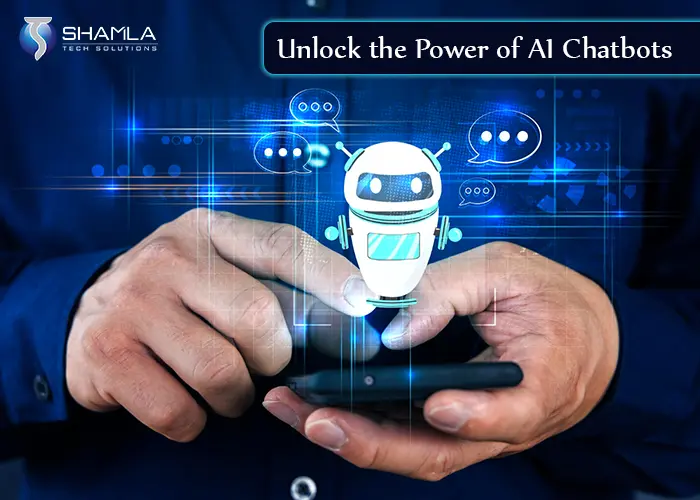
Testing the Chatbot
Types of Testing (Functionality, Performance, and User Acceptance)
Effective testing is crucial for the successful deployment of AI chatbots. Here are the key types of testing:
Functionality Testing: This ensures that all features of the chatbot work as expected. It involves checking if the bot can handle various user inputs correctly and respond appropriately. For instance, testing an ai chatbot example includes verifying that it can execute commands, understand user intents, and handle edge cases.
Performance Testing: This type of testing evaluates the chatbot’s responsiveness and stability under different conditions. Performance testing involves simulating high traffic to see if the bot can maintain performance without lag or errors. For ai bots to talk to, it is critical to ensure they can handle multiple conversations simultaneously without degrading performance.
User Acceptance Testing (UAT): This is the final phase of testing where real users interact with the chatbot to ensure it meets their expectations and requirements. UAT helps in identifying any usability issues and provides insights into how the bot performs in real-world scenarios.
Tools and Techniques for Effective Testing
Testing chatbots involves various tools and techniques to ensure comprehensive coverage and effectiveness. Here are some widely used tools:
Botium: Botium is a popular tool for automated testing of chatbots. It supports various chatbot platforms and can simulate conversations to test functionality and performance.
Chatbot Testing Frameworks: Many chatbot developer platforms, like Dialogflow and Microsoft Bot Framework, provide built-in testing tools to streamline the testing process.
Manual Testing: Despite the availability of automated tools, manual testing is essential for evaluating the user experience. It involves real users interacting with the bot to identify any usability issues.
Analytics and Monitoring Tools: Tools like Google Analytics and Botanalytics help in monitoring the chatbot’s performance in real-time. These tools provide insights into user interactions, enabling continuous improvement.
An ai chatbot example can be tested using these tools to ensure it provides accurate and relevant responses to user queries. For instance, during chatbot development services, developers can use Botium to automate the testing process and ensure the chatbot performs well under various conditions.
Additionally, integrating ai chatbot api during the development phase allows for real-time testing and refinement. By using ai chat gpt online tools, developers can interact with the chatbot in a controlled environment, making necessary adjustments before deployment.
Thorough testing using various tools and techniques ensures the chatbot performs optimally and meets user expectations. Whether using ai bots to talk to, leveraging ai chatbot examples, or employing advanced ai chatbot api, comprehensive testing is vital for successful chatbot deployment.
Deployment and Maintenance
Steps for Deploying the Chatbot
Deploying an AI chatbot involves several critical steps to ensure it operates smoothly in a real-world environment. Here’s a comprehensive overview:
Choose the Right Hosting Platform: Select a reliable hosting platform that supports your chatbot’s technology stack. Popular choices include cloud services like AWS, Google Cloud, or Microsoft Azure.
Integrate the Chatbot API: Implement the ai chatbot api into your chosen platform. This API enables the chatbot to interact with users and access necessary resources.
Configure the Deployment Environment: Set up the environment, including necessary libraries and dependencies, to ensure the chatbot functions correctly.
Test the Deployment: Before going live, conduct thorough testing to ensure the chatbot operates as expected in the deployment environment. Utilize ai chat gpt online tools for real-time testing and adjustments.
Launch the Chatbot: Once testing is complete, officially launch the chatbot to the intended user base. Monitor the initial interactions closely to address any unforeseen issues.
Monitoring Performance and Regular Updates
Post-deployment, continuous monitoring and maintenance are crucial for the chatbot’s success:
Performance Monitoring: Use analytics tools to track the chatbot’s performance. Monitor key metrics such as response time, user engagement, and error rates. Platforms like Google Analytics and Botanalytics are useful for this purpose.
Regular Updates: Keep the chatbot updated with the latest features and security patches. Regularly update the underlying ai chatbot api to leverage improvements and new capabilities.
User Feedback: Collect and analyze user feedback to identify areas for improvement. This feedback is invaluable for refining the chatbot’s functionality and user experience.
Ensuring Security and Compliance
Security and compliance are paramount in chatbot deployment:
Data Encryption: Ensure all user data is encrypted both in transit and at rest. This protects sensitive information from unauthorized access.
Compliance with Regulations: Ensure the chatbot complies with relevant data protection regulations, such as GDPR or CCPA. This involves transparent data handling practices and providing users with control over their data.
Regular Security Audits: Conduct regular security audits to identify and fix vulnerabilities. This proactive approach helps prevent potential security breaches.
Access Control: Implement strict access control measures to ensure only authorized personnel can access sensitive components of the chatbot system.
Example: Deployment of an AI Chatbot
Let’s consider an ai chatbot example in the customer service domain. A chatbot developer creates a bot to handle customer queries for an e-commerce platform. Using ai chat gpt online, the developer integrates advanced natural language processing capabilities. After thorough testing, the bot is deployed on AWS. Performance metrics are monitored continuously, and regular updates are applied to improve functionality and security. User feedback is collected to refine the bot, ensuring it meets customer expectations effectively.
By following these steps and incorporating best practices in chatbot development services, you can successfully deploy and maintain an AI chatbot that provides valuable interactions and meets security and compliance standards.
